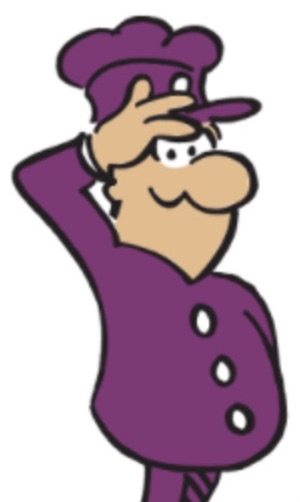Destination spotlight - Peru
Peru is a country of vast variations; from the peaks of the Andes to the sweeping coastline, towering sandy deserts and vast exotic jungle. Peru is a country made for adventurers, whether you plan on trekking the Inca trails, catching a few waves or hanging on to a dune buggy for a high speed ride down a sand dune.
Even if you don’t want an action-packed adventure, there is still plenty to see and do in Peru. Soak up the culture of the traditional markets in all their colourful glory, enjoy the food at what is now one of the world’s culinary hotspots, or marvel at some of the most abundant swathes of wildlife in the world.
Peru is renowned for being a visitor-friendly country, with excellent tours and organised excursions meaning that even some of the most remote areas are accessible. Be open minded and explore all that this magnificent country has to offer. You won’t regret it.
When to Go
The best time to visit Peru depends on what you want to do during your trip to this beautiful country. If you’re heading to the coastal areas of the country along the Pacific then many recommend visiting in January. This is the typical summer season of countries in the southern hemisphere, when weather is usually very warm and sunny.
If you want to head for the mountains and visit the incredible Incan ruins of Machu Picchu then plan your visit accordingly. Peak season is July-August, with October-April often described as the rainy season. Visiting during the drier months between April and November is recommended, although the weather is unpredictable and rain and fog can happen during all times of the year.
What to Do
If you want to fully immerse yourself in Peruvian culture then it would be a good idea to time your stay to coincide with one of Peru’s many festivals. One of the most famous examples is the Inti Raymi, the Inca festival of the sun, which takes place on the 24th June. The festival is enormously popular and draws thousands of visitors each year from all over Peru, and worldwide, coming to witness the spectacle.
The main event takes place in Sacsayhuamán, a structure that may have been a fortress in the past but now stands as an impressive, mysterious ruin. Whilst the festival used to involve ritual sacrifices, todays activities remain dramatic and colourful but use actors and very realistic stage play instead. It may not be faint hearted, but people who really want to get a face to face with Incan culture should definitely not miss out.
The event is very popular so In order to get the best seats it is definitely worth booking in advance. If you feel the main show isn't for you or struggle to get seats then there is still plenty to enjoy with the festivals. After the main ceremony, everyone takes to the streets and there is plenty of dancing, music and street-level entertainment that anyone can enjoy.
Where to Stay
For the widest choice of places to stay in Peru Lima and Cusco are your best choice. The cities offer a range of accommodation ranging from economically prices pensiones and hospedajes (guest houses) to elaborate hotels built upon the bones of Incan ruins.
If you want to get an experience that reflects your wild adventure in Peru then a stay in one of Peru’s eco or forest lodges may be what you are looking for. Depending on if you want to stay in a hotel with all the normal indemnities or fully immerse yourself, there are some great opportunities for staying in log cabins or accommodation in center of Peru’s wild side.
Inkaterra offer a number of hotels to give tourists an authentic, eco friendly experience. Peru is surrounded by awe inspiring natural vistas so if you can spare the money for one of these extraordinary rooms, then it will be well worth it.
If you are looking for something more affordable or are on a backpacking holiday then you could consider staying in one of Peru’s hostels. The quality of these can vary but it gives visitors a good place to speak and share experiences with like-minded travelers. Loki Hostel offer an extensive range of hostels across the country generally still contain the pools, bars and other facilities you would expect from a hotel but at a cheaper price.
Not to be Missed
- Machu Picchu - Machu Picchu is one of the most famous sights in the world, drawing millions of people to experience its magic year after year. Challenge yourself by hiking the trail or take the train to experience the wonder without the hard work!
- Huacachina - Just outside of Ica, this desert village is surrounded by towering sand dunes which prove a major draw for adrenaline junkies. Be sure to enjoy the incredible sand boarding and high-speed dune buggy rides on offer.
- Rainforest Canopy Walkway - See the jungle in a whole new way thanks to this canopy walkway over the mesmerising Amazonian jungle. In places the walkway reaches 35m above ground, giving a totally unique view over the treetops and the species that live within them.
- Sacred Valley of the Incas - North of Cuzco, The Sacred Valley has become hugely popular with those wanting to explore the villages, markets, and historical Inca sites. Trek some of the gorgeous trails or enjoy some rock climbing if you want a bit more of an adrenaline-fuelled trip.
- Cuzco - Once the capital of an Incan empire, Cuzco has a rich history with many archaeological wonders to be found. Enjoy this wonderful city’s bustling markets and great range of restaurants - it’s the perfect stopover on the way to Machu Picchu.
Fast facts
Getting to Peru: From London, the quickest flights to Lima take around 15hrs 25mins, with 1 stopover.
Visa requirements: British nationals don’t need a visa to travel to Peru if the purpose of the visit is tourism.
Currency: The currency in Peru is the Peruvian Nuevo Sol.
Time zone: Peru is 5 hours behind Coordinated Universal Time (UTC -0:500). This means that London is 5 hours ahead of Peru.
Language: The official language in Peru is Spanish, although some aboriginal languages such as Aymara and Quechua are spoken in different areas.







